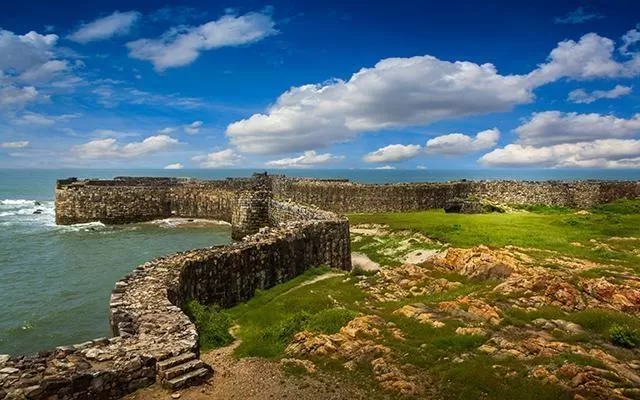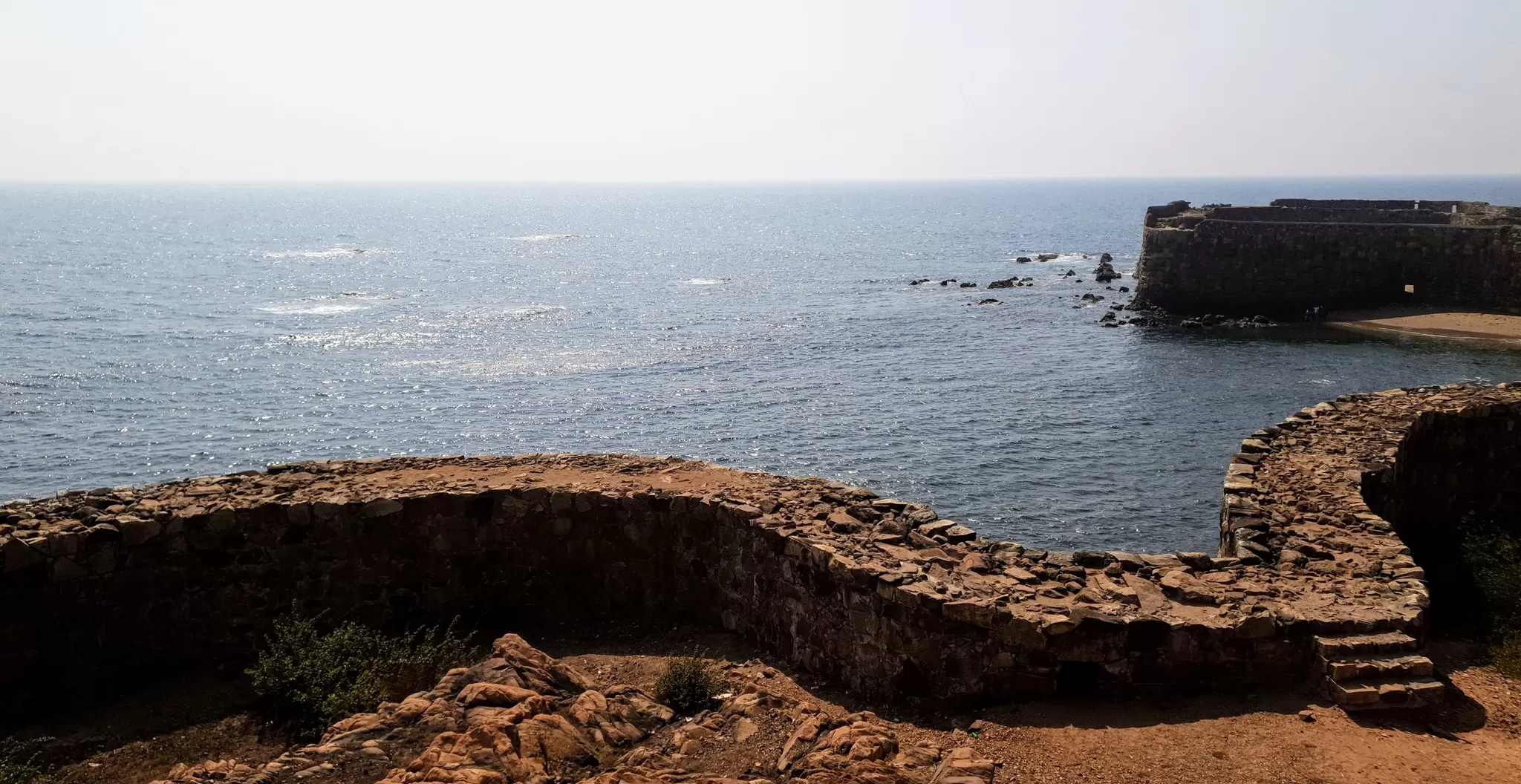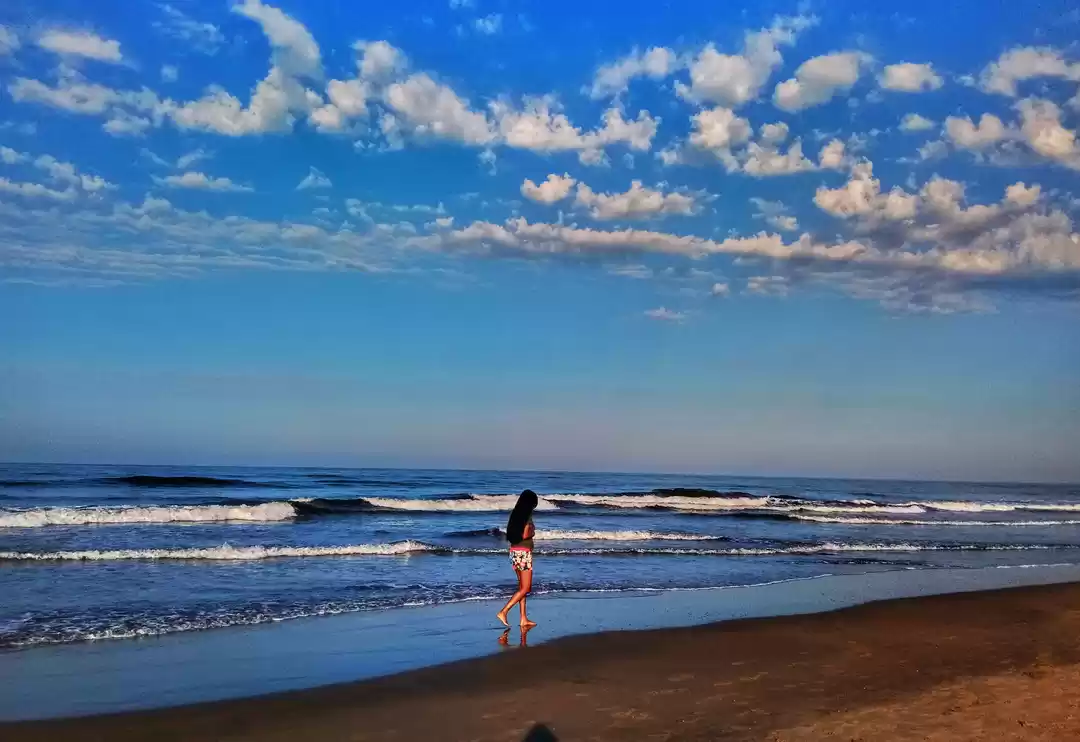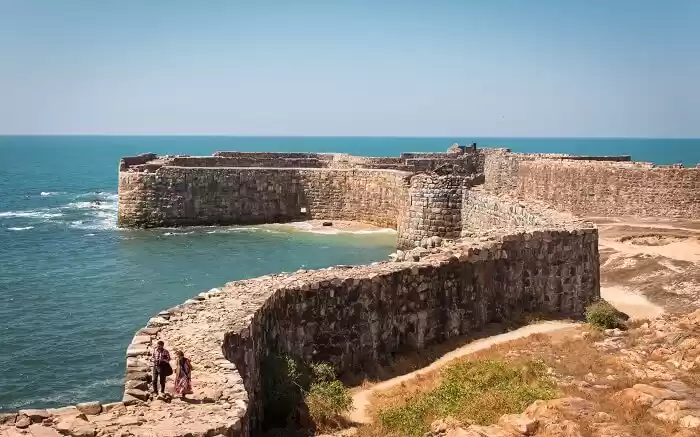Are you looking for a unique and memorable destination for your next trip? Do you want to explore the rich and diverse history and culture of Maharashtra? If yes, then you should definitely visit the Sindhudurg Fort, one of the most impressive and well-preserved forts in India.
Sindhudurg Fort is a majestic fort that stands on a rocky island in the Arabian Sea, off the coast of Malvan in Maharashtra. It was built by the great Maratha king Shivaji Maharaj in the 17th century to protect his territory from the enemies. The fort is a marvel of engineering and architecture, with a massive wall, strong bastions, intricate gateways and a temple dedicated to Shivaji Maharaj. The fort also offers stunning views of the sea, the rocks and the surrounding beaches.
In this article, we will tell you everything you need to know about the Sindhudurg Fort, including how to visit it, what to expect, its architecture and features, its history and significance, and some tips and advice to make your trip unforgettable. Read on to discover why Sindhudurg Fort is a historical and cultural treasure of Maharashtra.

How to Visit Sindhudurg Fort
Sindhudurg Fort is located about 490 km from Mumbai, the capital city of Maharashtra. You can reach Malvan by road, rail or air from Mumbai or other nearby cities. The nearest airport is Dabolim Airport in Goa, which is about 130 km from Malvan. The nearest railway station is Kudal, which is about 35 km from Malvan. You can also take a bus or a taxi from Mumbai or other cities to Malvan.
Once you reach Malvan, you need to take a ferry ride to reach the fort. The ferry ride takes about 15 minutes and costs around Rs. 70 per person. The ferry service operates from 9:30 am to 5:30 pm every day, except during monsoon season (June to September). You need to buy a ticket at the jetty before boarding the ferry. The entry fee for the fort is Rs. 5 per person.
The best time to visit the fort is between October and March, when the weather is pleasant and the sea is calm. You can also visit the fort during summer (April to May), but avoid visiting during monsoon (June to September), as the sea can be rough and the ferry service can be suspended.
There are many attractions and activities that you can enjoy near the fort, such as:
- Visiting the Shivaji Maharaj Temple, which is located inside the fort and houses a statue of Shivaji Maharaj made from his own handprints and footprints.
- Exploring the rock garden, which is a beautiful park with various rock formations and sculptures.
- Visiting the Rameshwar Temple, which is an ancient temple dedicated to Lord Shiva and located near the jetty.
- Enjoying scuba diving and snorkeling at Tarkarli Beach, which is one of the best places in India for underwater adventure.
- Relaxing at Devbaug Beach, which is a serene beach with white sand and clear water.
Some tips and advice for visiting the fort are:
- Wear comfortable clothes and shoes, as you will have to walk a lot inside the fort.
- Carry water, snacks and sunscreen, as there are no shops or facilities inside the fort.
- Respect the rules and regulations of the fort, such as not littering, not climbing on the walls or bastions, not taking photos inside the temple, etc.
- Hire a guide or buy a guidebook at the jetty, as there are no signboards or information boards inside the fort.
- Plan your trip in advance and book your accommodation and transportation accordingly.
The Architecture and Features of Sindhudurg Fort
Sindhudurg Fort is a masterpiece of engineering and architecture that reflects the vision and skill of Shivaji Maharaj and his engineers. The fort covers an area of about 48 acres and has a perimeter of about 3 km. The fort was built using local stone and lime mortar, with iron nails embedded in it to make it stronger. The fort has a massive wall that rises up to 9 meters high and 3 meters thick. The wall has 42 bastions that provide a panoramic view of the sea and the land.
The wall also has three gateways: one on the east side facing Malvan, one on the west side facing Arabian Sea, and one on the south side facing the island. The gateways are decorated with carvings and inscriptions.
The most remarkable feature of the fort is the Shivaji Maharaj Temple, which is located in the center of the fort. The temple was built by Shivaji Maharaj himself and is dedicated to his patron deity. The temple houses a statue of Shivaji Maharaj made from his own handprints and footprints, which is considered to be very sacred and rare. The temple also has a gallery of portraits of Shivaji Maharaj and his family members, as well as some weapons and artifacts used by him.
Another notable feature of the fort is the three water tanks, which are located near the temple. The water tanks are connected to natural springs and provide fresh water throughout the year. The water tanks are also considered to be holy and have healing properties. The water tanks are named after Shivaji Maharaj’s mother, wife and daughter: Jijamata, Saibai and Putalabai.
Some other features of the fort are:
- The secret tunnel, which is a hidden passage that connects the fort to the mainland. The tunnel was used for escape and communication purposes.
- The coconut tree, which is a single coconut tree that grows inside the fort. The coconut tree is believed to be a miracle, as it survives without any soil or water.
- The footprints, which are some footprints engraved on the rocks near the sea. The footprints are said to belong to Shivaji Maharaj and his horse.
- The coral reef, which is a natural coral reef that surrounds the fort. The coral reef is home to various marine life forms, such as fish, turtles, dolphins and sharks.

The History and Significance of Sindhudurg Fort
Sindhudurg Fort has a rich and glorious history that spans over three centuries. The fort was built by Shivaji Maharaj in 1664, after he defeated the Adilshahi sultanate of Bijapur and expanded his empire to the Konkan coast. Shivaji Maharaj chose the island of Kurte as the site for the fort, as it was strategically located near the mouth of Malvan creek and offered a natural defense against naval attacks. Shivaji Maharaj also wanted to counter the growing influence of the Portuguese, the British and the Mughals in the region.
The construction of the fort took about three years and involved over 3000 workers, 200 sculptors, 1000 stone breakers and 100 blacksmiths. Shivaji Maharaj personally supervised the construction and ensured that every detail was perfect. He also invited some experts from Portugal and Holland to help with the design and engineering of the fort. He also brought some soil from various forts in Maharashtra and mixed it with the foundation of the fort, as a symbol of unity and strength.
The fort served as a naval base and a military headquarters for Shivaji Maharaj and his successors. The fort witnessed many battles and events, such as:
- The Battle of Wadgaon, which was fought in 1673 between Shivaji Maharaj and his son Sambhaji on one side, and his half-brother Vyankoji on the other side. Vyankoji had rebelled against Shivaji Maharaj and allied with the Mughals. Shivaji Maharaj won the battle and reconciled with Vyankoji.
- The Siege of Sindhudurg, which was attempted in 1682 by Aurangzeb, the Mughal emperor, who wanted to capture the fort and eliminate Shivaji Maharaj’s son Rajaram. Rajaram defended the fort bravely with a small army for eight months, until he escaped through the secret tunnel and reached Vishalgad. Aurangzeb failed to capture the fort and withdrew his forces.
- The Transfer of Sindhudurg, which happened in 1765, when the Peshwas, the successors of Shivaji Maharaj, handed over the fort to the British, as part of the Treaty of Purandar. The British occupied the fort for a few years, until they returned it to the Peshwas in 1783.
- The Revolt of Sindhudurg, which occurred in 1844, when some local leaders and soldiers rebelled against the British rule and tried to capture the fort. The revolt was suppressed by the British, who arrested and executed many rebels.
- The Freedom Struggle of Sindhudurg, which took place in 1942, when some freedom fighters and villagers participated in the Quit India Movement and hoisted the Indian flag on the fort. The British attacked the fort and arrested many freedom fighters.
Conclusion
The fort is not only a historical monument, but also a cultural treasure of Maharashtra. The fort represents the pride and glory of the Maratha empire and its founder Shivaji Maharaj, who is revered as a national hero and a symbol of courage and patriotism. The fort also showcases the art and culture of Maharashtra, such as its architecture, sculpture, painting and literature. The fort also preserves the traditions and customs of the local people, such as their festivals, rituals and cuisine.
Sindhudurg Fort is a must-visit destination for anyone who wants to experience the history and culture of Maharashtra. The fort will inspire you with its beauty and charm, and will make you feel proud of your heritage and identity.











































